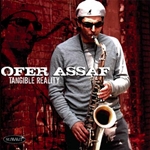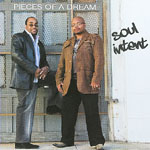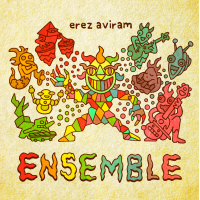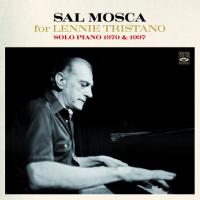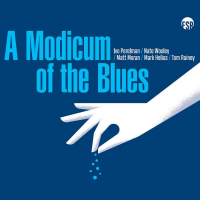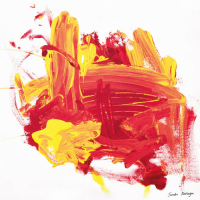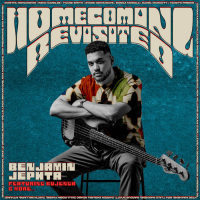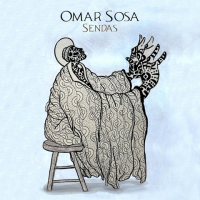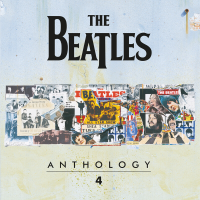Home » Jazz Articles » Multiple Reviews » Introducing Lapslap: Itch and Scratch
Introducing Lapslap: Itch and Scratch
The albums Itch and Scratch were both recorded at the Reid Concert Hall, Edinburgh, from 7th to 9th September 2007. Itch was released in autumn 2008, followed by Scratch in spring 2009. There are many similarities between the two, including their complementary titles, and monochrome visual style; they are best considered as two different parts of a double album. As if to reinforce the link, Itch contains a track entitled "Scratchy," while Scratch contains a track entitled "Itchy." (Hmmm, "Itchy" and "Scratchy." Maybe these guys are fans of The Simpsons?)
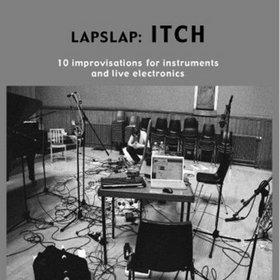 Lapslap
LapslapItch: 10 improvisations for instruments and live electronics
Leo
2008
Lapslap's first release is a showcase of the breadth and range of their music, particularly their use of electronics. None of the ten pieces is long and only one—"Spoons"—features all three instruments together without computers; it reveals the trio to be a creative improvising environment in which no instrument dominates but where there are ever-shifting collaborations between the players, creating a kaleidoscopic effect. The piece features effective metallic percussive effects that are not obviously attributable to any of the credited instruments—maybe these are the spoons of the title? This piece may leave you wanting to hear the trio improvising together for longer than its four minutes. The sound of the Reid Hall is richly resonant and is captured in great detail by the recording.
The other pieces all feature computers; three feature tenor sax plus piano plus computer; the rest feature a lone instrument plus one computer or more. Edwards and Parker both have a history in computer manipulation of instruments, as evidenced by Parker's use of "reactive sound environment" on "Not Cheddar But." As ever when computers are deployed in this way, their use raises more questions than it answers; to fully understand what one is hearing, a full (and doubtless quite lengthy) explanation of their role would be useful. Based on the aural evidence of "Not Cheddar But," the computer seems to create a background drone which is not obviously "reactive" but certainly contributes to the piece's laid back ambience. Here as elsewhere, Edwards on tenor saxophone impresses with a rich tone plus keen melodic instincts on a slowly unfolding solo. The only track that belies this impression of the saxophonist is "Honk," which largely showcases Schistek's fractured piano punctuated by occasional loud contrasting blasts (honks, indeed) from Edwards.
Just as surprising is "Hungry," on which the use of two computers subsumes the solo piano into an industrial blast of metallic percussive noise and glitches. The piano gamely fights its way to the surface to recapture the limelight with an appropriately percussive display of block chording offset by finer detailed soloing.
 Lapslap
LapslapScratch: 11 improvisations for instruments and live electronics
Leo
2009
In contrast to its partner album, Scratch rather downplays the role of the computers and electronics. Its opening three tracks feature solo instrumental performances by Schistek, Parker, and Edwards respectively, affording the listener the chance to hear the key ingredients of the three tracks that follow, all of which are trio improvisations without a computer to be heard. All six tracks satisfy the craving created by Itch, and support the impression gained there of three improvisers bursting with creativity.
Intriguingly, Schistek is a synaesthete—one who actually experiences the sensation of colour when a sound is heard. This explains the references to colour in Lapslap pieces such as "Rhapsody in Light Yellow" and, here, her two solo piano pieces, "Blau" and "Gelb." The contrasts between the moods of these two pieces give some insight into the experiences of a synaesthete; while "Blau" is grandiose and majestic with a sense of deliberation, "Gelb" is more subdued and understated. They make an intriguing pair when heard back to back.
Only two of the albums pieces, "Pinned" and "Rustle," employ computers, and the sleevenotes of Scratch provide more explanation than those of Itch, informing us that Lapslap apply a loosely held rule to exercise control over their use: if the computer is not being "touched" then it does not make sound. This is a refreshing approach, as it avoids some of the less creative uses to which computers are put elsewhere, uses which can overwhelm the instrumental contributions. The two tracks demonstrate this admirable restraint, including the computers' music as an equal partner in the improvisations rather than as an added extra or a novelty ingredient.
As a contrasting pair, Itch and Scratch demonstrate the strengths of this trio, particularly their improvisatory skills and innovative use of computers, and can be highly recommended. The only question that remains: after these two, how will they title their third album? Whatever the answer, it will be worth waiting for...
Tracks and Personnel
Itch
Tracks: Not Cheddar But; Spoons; Sloppy Lips; Nailed; Honk; Hungry; Schweigen; Scratchy; Motor Mouth; Rhapsody in Light Yellow.
Personnel: Michael Edwards: tenor saxophone, computer, midi wind controller; Martin Parker: French horn, computer; Karin Schistek: piano.
Scratch
Tracks: Blau; Throat horn; Zerbrotzein; Kettle; Itchy; Seep; Pinned; Gelb; Bite; Blodflocke; Rustle.
Personnel: Michael Edwards: tenor saxophone, computer, midi wind controller; Martin Parker: French horn, computer; Karin Schistek: piano.
Tags
PREVIOUS / NEXT
Support All About Jazz
 All About Jazz has been a pillar of jazz since 1995, championing it as an art form and, more importantly, supporting the musicians who make it. Our enduring commitment has made "AAJ" one of the most culturally important websites of its kind, read by hundreds of thousands of fans, musicians and industry figures every month.
All About Jazz has been a pillar of jazz since 1995, championing it as an art form and, more importantly, supporting the musicians who make it. Our enduring commitment has made "AAJ" one of the most culturally important websites of its kind, read by hundreds of thousands of fans, musicians and industry figures every month.


